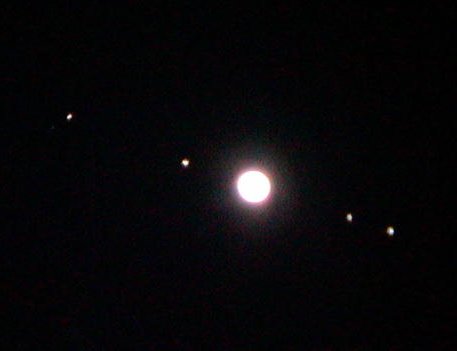wordsout
Welcome
To The Real World <
31
of 59 >

Galileo
and the four moons of Jupiter
He
saw
the first moon
Ganymede
bearing the fatal cup
to
He
saw
the second moon
Callisto
dancing entranced
around a different god.
With
the
third moon
Io
the priest and people sang
to a
universe no longer listening,
and
with
the fourth moon
Europa
he knew what had enthralled a continent
was not worth dying for.
Galileo's telescopic observations of the major moons of Jupiter in 1610 confirmed that the rest of the universe did not revolve around either the Earth or the Sun, paving the way for the dismantling of the earth-centred cosmology of the Bible. The commentary here plays on the names Galileo gave them from Greek mythology: Ganymede was a cupbearer for the gods on Olympus and Callisto a nymph who entranced Zeus with her dancing; Io was another nymph seduced by Zeus, but the play here is on a line from the Christmas carol Ding Dong Merrily On High, and Europa was also (seemingly inevitably) seduced by Zeus and her name was given to the continent.
It is now known that Jupiter has at least 79 moons.
© Godfrey Rust 1998, godfrey@wordsout.co.uk. See here for permissions.